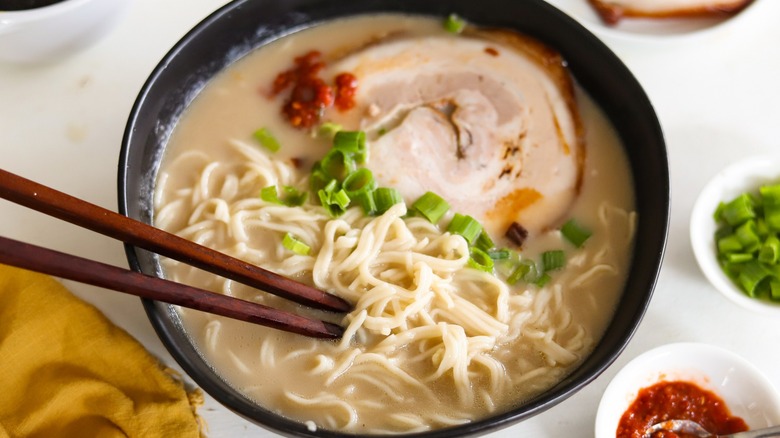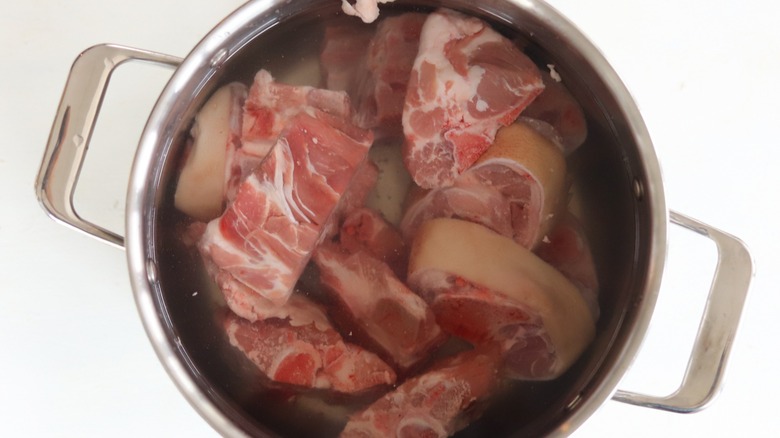How To Prepare Pork And Beef Bones For Homemade Tonkotsu Ramen
If you want to make the creamiest and most delicious Japanese ramen at home, you're in luck. Tasting Table sat down for a conversation with ramen expert and chef Vidal Saioro of Momofuku Noodle Bar based in NYC to chat about all things tonkotsu ramen. Ramen lovers know it's the broth that often makes or breaks a bowl of ramen, and central to achieving the complex flavors of an excellent tonkotsu broth is how you choose and prepare the meat bones.
While tonkotsu ramen is traditionally made with pork bones, there is room to experiment with those of beef and even chicken. Just be sure to pick high-quality cuts. "I would make sure to get fresh bones and cuts with more collagen like feet and other parts of that nature," Chef Saioro advises. These cuts will ensure that your broth is rich, with strong meaty flavors. Once you choose the best pork or beef bones, extracting the deep umami essence from them is the next step.
Saioro adds, "It's always best to soak [the bones] overnight and blanche them at least one time." Soaking and blanching removes blood and impurities from the bones. After that, be sure to skim the scum or proteins that rise to the surface of the broth. Tasting Table's recipe developer, Leah Maroney, concurs with Chef Saioro's tips and shares her recipe for crafting the ultimate tonkotsu ramen at home.
Clean bones result in the tastiest tonkotsu ramen broth
Leah Maroney suggests choosing quality pork trotters and neck bones to form the robust base for her ultimate tonkotsu broth. The pork trotters and bones go into a large stock pot, along with cold water for soaking. Blanch them for at least an hour to remove impurities — but as chef Vidal Saioro suggests, you can also blanch them more than once. Then be sure to drain and rinses the bones under cold water, further cleaning them.
Next, boil the bones again, this time over low heat along with charred vegetables. A final step to achieving the silkiest and most unctuous tonkotsu broth is to strain it, then emulsify it with an immersion blender until it's frothy. If you don't have an immersion blender, you can always use a standard blender. For added flavor, chefs and home cooks also commonly char or roast the meat bones after soaking and cleaning them.
While methods for preparing pork or beef bones for ramen may vary slightly, one step remains consistent across recipes: cleaning and clearing the bones of impurities, like blood and bone shards, first. This allows you to extract the bones' best-tasting essence for the creamiest, smoothest, and most delicious tonkotsu ramen broth.

